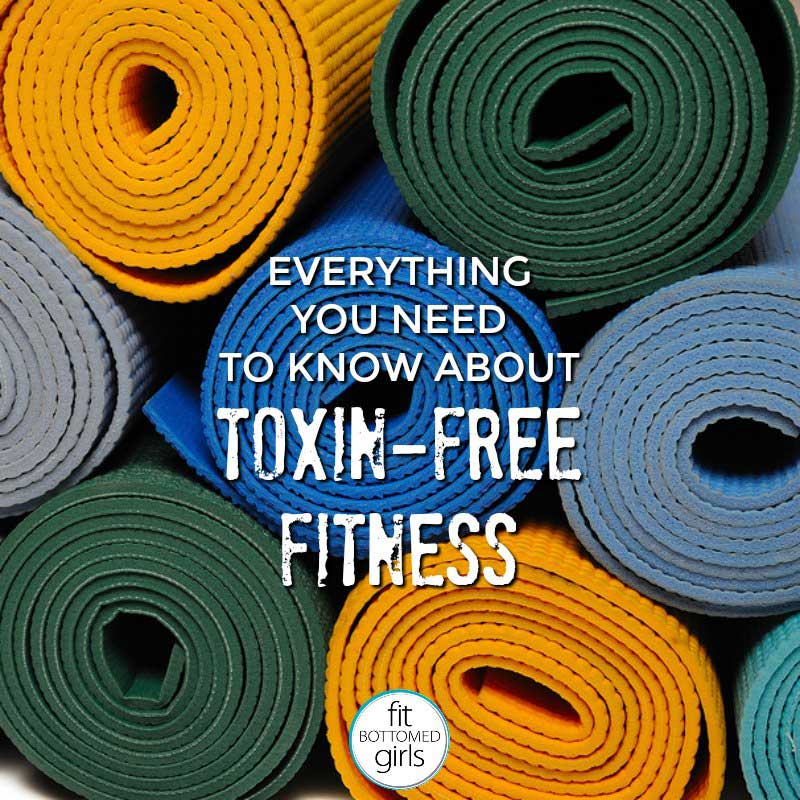Everything You Need to Know About Toxin-Free Fitness

When you head to your fitness facility, you’re pursuing health and wellness through exercise. But there’s a possibility that your efforts at the gym could actually hinder your vitality by exposing you to pollution and toxins.
This doesn’t mean you shouldn’t go to the gym! Still, a few mindful considerations regarding how you pick your gym, workout clothing and equipment may help improve your health and quality of life.
Air pollution might not be on your radar at your local gym, but clean air is a crucial component to wellness. And factors restricting air flow and boosting carbon dioxide are an increasing problem in urban gyms — and very likely, your indoor exercise environment too. Check out the following guide to learn more about the issue and find out how to evaluate your building’s practices.
Why Clean Air Matters
According to a study on a sample of fitness facilities in the UK, the researchers found high concentrations of air pollutants in the buildings, especially when attendance was high. Due to poor ventilation and a lack of control strategies, the levels of VOC, CO2 and CH2O were alarming. American centers have similar conditions, and recycled air systems and highly populated gyms have even worse settings.
The state of the air in your workout center affects everyone, but some people have more noticeable reactions. When the carbon dioxide is too high, there’s a potential for anyone to have trouble breathing and feel lightheaded. However, there’s a particular connection from air pollution to abnormal heart rhythms and asthma.
So, your exercise center might have sources of toxins, especially in the air. But how can you assess your gym’s air quality? You can ask the facility’s workers and management, but you can also look for the following signs.
Cleaning products: Synthetic fragrances, usually in air fresheners, can irritate your skin and respiratory system depending on the ingredients included. As these products enter the air, their harmful chemicals can lead to health issues.
When you’re at the gym, you wipe down the equipment you use, and the employees also run disinfectant over surfaces. But disinfectants hold phthalates, and the scented ones contain plenty of volatile organic compounds. Avoid chemical-filled wipes and air fresheners by bringing your own or switching to an eco-friendlier facility.
Reused Air Systems: If your gym is using an air system that pushes contaminated air back through the rooms rather than sending fresh air through, you can expect poor quality. This setup is a way to cut down on costs, but in the long run, it hurts you and the facility. With a proper filtration system, substances in your fitness studio, like old incense, stuffy air and residual chemicals, can cycle out and be replaced with pure air.
Mold: Another lurking pollutant at fitness centers is mold, which can affect your lungs and respiratory system. A place where sweat is abundant and steamy showers are regularly on generates a lot of moisture and heat, making it the perfect place for mold to thrive. Those with a sensitivity to mold can experience heightened symptoms, but proper cleaning precautions can easily remove a mold problem.
The risk of air pollution in gyms has been met with several green solutions. Installing effective filtration systems is one step that facilities have chosen, but many centers need to catch up. Plant-filled walls are a growing trend in environment-conscious facilities as well. These walls emit extra oxygen to counter an excess of carbon dioxide. At-home fitness can also improve from houseplants.
Popular Products That Pose a Risk
Air pollution is not the only source of unsafe chemicals at your fitness center. Other surfaces and substances can carry unexpected toxins. Check out the following items and their risks.
Yoga Mats: Many yoga mats have synthetic and chemical ingredients you might not know about. Most mats need a chemical binder to hold them together, but there are other substances that might cause you more worry. Polyurethane, latex, PVC and rubber are in several popular brands’ mats. To avoid these substances, bring your own mat with organic materials like hemp.
Workout Clothes: Your workout outfits can also include hazardous materials. Endocrine disruptors, like phthalates, are present in several well-known fitness clothing brands. Activewear can pose a danger to you, so be wary of the products you purchase. Water- and sweat-resistant products are often laced with PFCs, which can increase your risk of cancer, hormone imbalance and immune dysfunction.
Although your gym’s toxin level might be surprising, don’t feel discouraged about fitness. Locate an eco-friendly gym or work out outdoors to avoid harmful substances. You can also encourage your facility to switch to cleaner practices and products. Round out your wellness journey by considering the impacts of your indoor gym!
How does your fitness facility stack up? –Kate Harveston

Comments
really great information i am really impressed… thank you
Really good information I liked it a lot
Thank you…
Great article.
Thanks for this amazing information.
This is far from everything I need to know… Where do I find some safe workout clothing brands, for example, or where to get a hemp mat? I’ve never heard of those!
Also, do you have any tips on how to raise these issues with your gym? There is only one gym in my town (so I can’t switch) and I’m not the most confident person… I would love to see a plant wall in there, or have some idea of what cleaning products they use, but I don’t know if I’m the only one who cares, and I don’t think I currently have the tools to persuade them if I am.
Thank you for sharing your experience with me, great information.
Thanks for sharing this helpful information.
Thank you for this post
Nice tips thanks
Comments are closed.